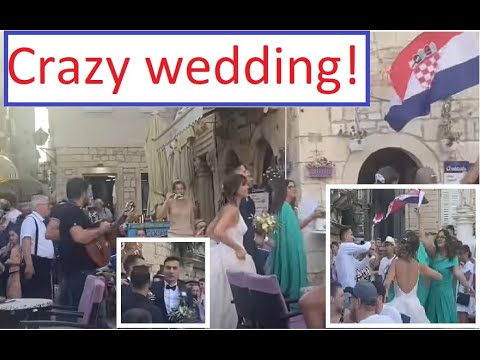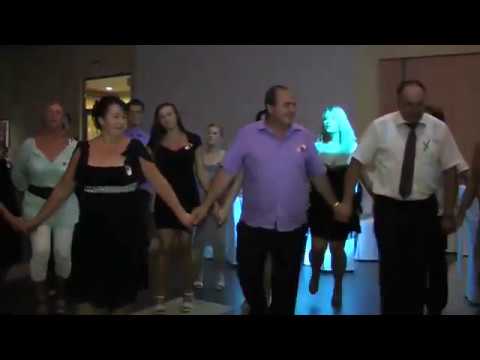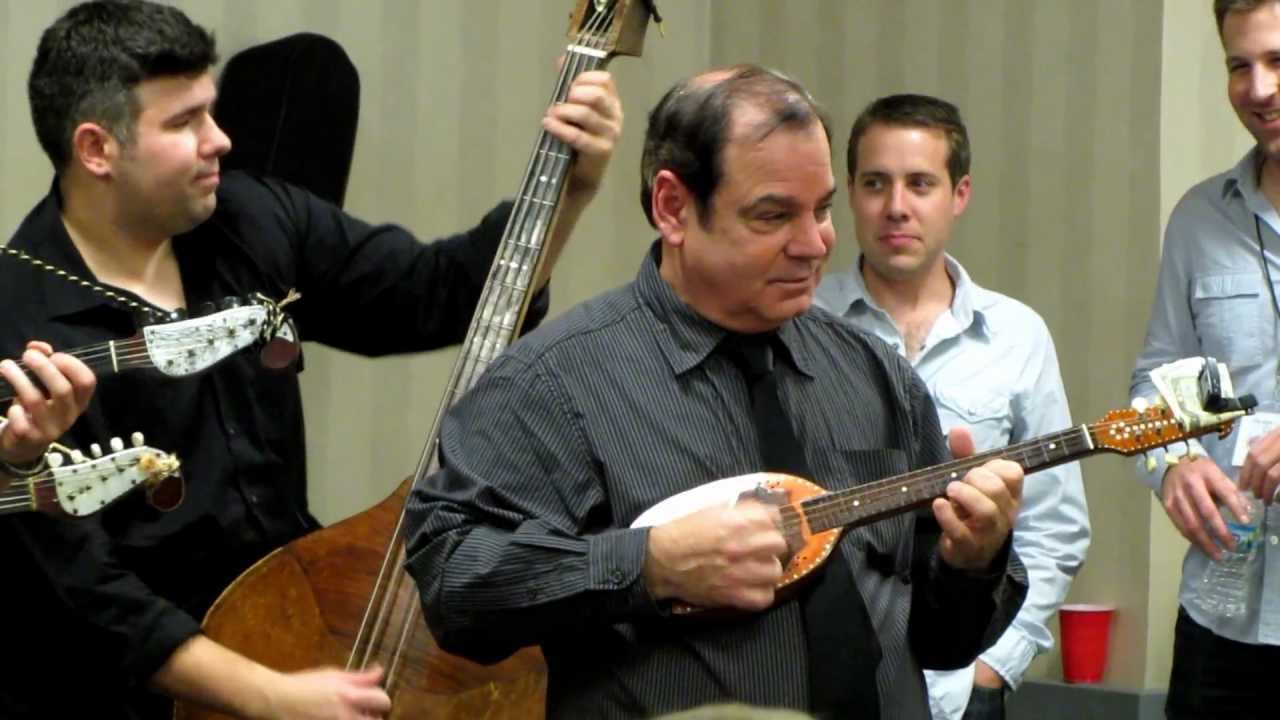Being invited to a foreign wedding is an exciting and once-in-a-lifetime opportunity. However, it can also be intimidating—you do not want to be insensitive or appear ignorant. Doing research not only prevents you from making a cultural faux pas but also helps you learn more about the culture.
Some magical and unforgettable Croatian wedding traditions include the Obiljezje (coin-bearing fruit), the Barjaktar (flag bearer), corsages and boutonnieres with rosemary, and Svatovski Kolači (mini wedding cakes). Below are more unique and unforgettable customs.
Croatian Wedding Traditions You Should Know
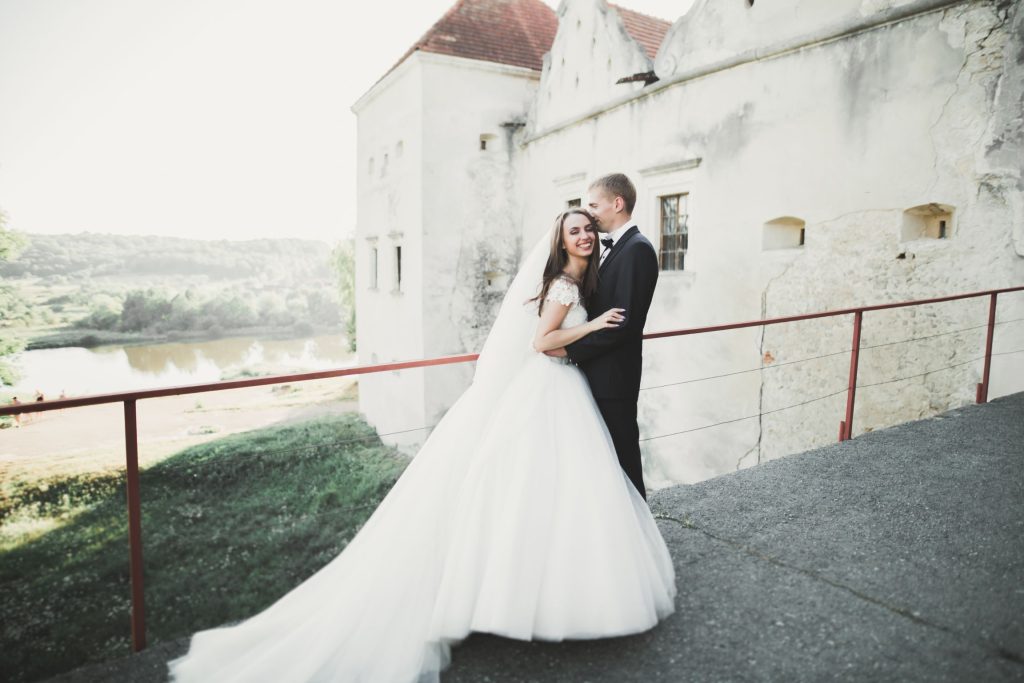
1. Obiljezje (The Coin-Bearing Fruit)
Universally, a couple’s engagement is marked by a ring. However, in certain areas within Croatia, it is common practice for the groom—or his mother—to give his bride-to-be a fruit impaled with coins. This gift symbolizes prosperity and fertility.
Accepting this gift, typically an apple, means the bride accepts the proposal. Additionally, the groom’s family also presents gifts like fruits, flowers, desserts, wine, and more.
Before or after the ceremony, the bride must try throwing this coin-bearing fruit over the roof of her home. Succeeding will prove her strength and readiness to start a family.
2. Celebrations Start at the Groom’s House
On the morning of the wedding, the groom’s entourage will go to his home first. With the help of his friends and relatives, the groom will prepare for the day ahead, along with traditional food and drinks.
A native Croatian band called Tamburaši will play traditional music, hyping everyone up and energizing them for the day ahead. Some toasts and speeches will also be made.
Eventually, everyone will go to their cars and leave for the bride’s home in a motorcade. The car in front will have a flag bearer, who will gleefully shout and wave around the Croatian flag. Everyone must also honk their horns.
3. Barjaktar (Flag Bearer)
The way couples walk from their homes to their wedding venue can vary from culture to culture. Examples include the decorated cars in Bosnia and the zaffe in Lebanon.
In Croatian wedding customs, the wedding procession is spearheaded by the Barjaktar, a person who carries the Croatian flag. They wear traditional attire, shouting and making celebratory noises along the way.
This Barjaktar can also shoot a fake gun as the groom leaves his home. Overall, the flag bearer captures the attention of the neighborhood and announces the joyful event to the world.
Later in the day, the bride has to find a way to steal the flag from the bearer. Afterward, the Barjaktar has to buy the flag back from her or complete a task to earn it.
4. “Buying” the Bride
On their wedding day, the groom arrives at the bride’s house accompanied by his friends. To court the bride, he may also bring a group of musicians. He typically also has to present a ‘ransom,’ such as jewelry, fine wine, and cash.
What plays out in this tradition at a Croatian wedding is a playful negotiation between the two families. The bride’s family may even offer up ‘false brides’—bridesmaids, other family members, and even male relatives dressed as women.
Additionally, they may also give the groom some silly tasks and challenges, all to ‘prove’ his love for the bride. Examples include:
- Push-ups or other exercises to prove his strength and physical capabilities
- Sing a serenade about the bride’s beauty
5. Riža (Rice) Ritual
At the end of a Croatian wedding, the newlyweds typically throw something over their heads. Traditionally, they would throw rice to symbolize good fortune and a joyful marriage. This custom can also be seen in Danish weddings. However, nowadays, to avoid having grains of rice in their hair, flowers and bubbles are a common alternative.
6. Throwing Coins During the Recessional
Another alternative to the Riža Croatian wedding custom is to throw coins instead. Friends and relatives must throw coins over the newlyweds, which symbolize their wish for good fortune, blessings, and a prosperous wedding. This can also be seen in Armenian weddings.
7. Raising the White Handkerchief
Meanwhile, while friends and relatives toss coins, the remaining guests can hold up white handkerchiefs instead. Each person waves around their handkerchief as the newlyweds walk in front of them. This act also shows the guests’ well-wishes for the couple.
8. A Sprig of Rosemary for Everybody
This rosemary is usually attached to a small piece of cloth. It may also be wrapped in ribbon and then pinned onto the left side of their clothes. Either way, it is a beautiful keepsake that symbolizes the interconnection of love, marriage, and nature.
It is also a custom in Croatian weddings for guests to give monetary donations in return.
9. Kolo (Traditional Croatian Circle Dance)
One of the highlights of a Croatian reception is the kolo, a celebratory dance that is featured in many events. Guests stand in a circle, hold hands, then move in unison to upbeat music. An experienced artist or dancer typically leads everyone to the correct patterns and movements.
10. Deciding the Head of the Household
A playful Croatian wedding tradition during the reception is holding quirky competitions to decide who would ‘wear the pants in the household.’
One example of this game is seeing who can step on each other’s foot first. The person to step on their spouse’s foot first will be considered the head of the household.
Another silly game is racing down the aisle toward the church doors after their ceremony. The person to reach the doors first becomes the head of the household.
11. Paying to Dance With the Bride
It is a wedding tradition in Croatian culture for guests to pay in exchange for the chance to dance with the newlywedded bride. It is similar to the money dance in Portuguese and Cuban customs, but they do not pin the money on the bride.
Instead, the maid of honor stands near the dance floor holding a basket, and the guests will drop the money there. The maid of honor then gets to decide how long the guest can dance with the bride, depending on ‘how much’ money they give.
This money can be used by the couple however they want. It can cover wedding expenses, build up their honeymoon funds, and more.
12. A Revel Into the Morning
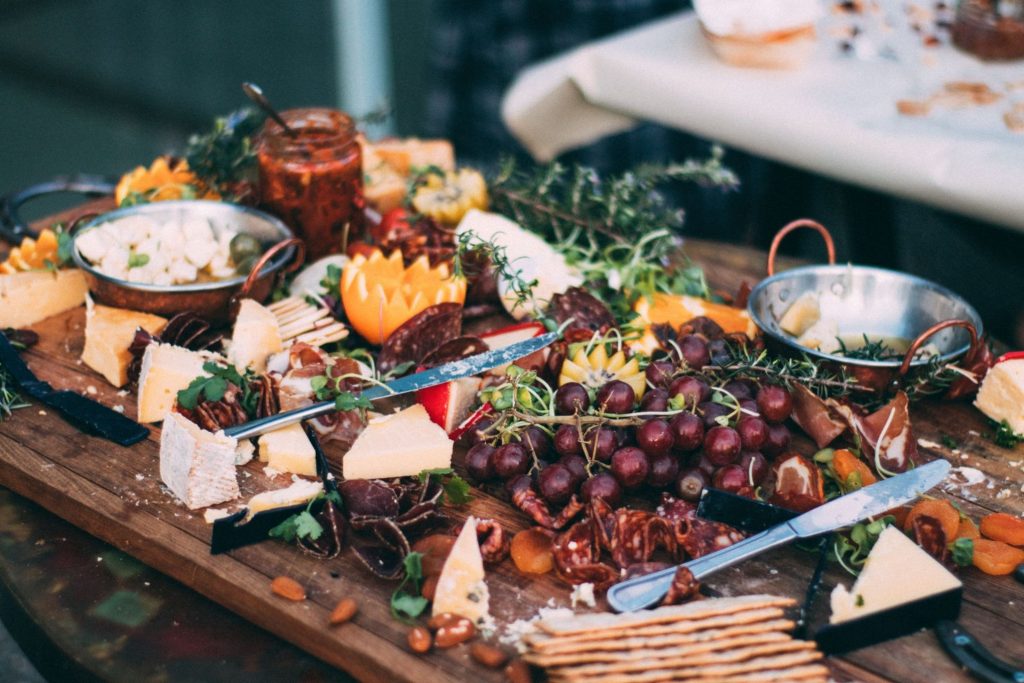
Croatian wedding receptions are characterized by an opulent and sumptuous feast. Couples put a lot of effort into this feast, as they have to feed their guests all night—often into the next morning, as the party does not stop at midnight.
Croatian cuisine, in general, is best known for its Mediterranean qualities, fresh seafood options, high-quality homemade cheese, splendid desserts, and fresh produce.
Here are some traditional dishes you will see at a Croatian wedding feast:
- Ćevapi → grilled meat sausages
- Dalmatinska Pašticada → pot roast marinated overnight and typically served alongside pasta or gnocchi
- Dingač → red wine produced locally in Croatia
- Goulash → soup or stew with meat, vegetables, and noodles seasoned with paprika and other spices
- Janjetina Ispod Peke → slow-roasted lamb with potatoes and other vegetables
- Komiška Pogača → baked bread pie with fish, tomatoes, and onions
- Pršut → cured artisanal ham, usually added to a charcuterie board
- Rakija → fruit brandy
- Sarma → cabbage rolls with minced meat and rice
- Travarica → a type of rakija with additional aromatic herbs
A few hours after midnight, you may be served goulash, Dalmatinska pašticada, or sarma. These meals will energize you for more dancing, singing, and celebrating.
Sarma, in particular, carries a sentimental meaning. Sharing this food represents unity and closeness among the community and your family, symbolizing the coming together of two clans.
For speeches and toasts, rakija is a common choice. Keep in mind that homemade rakija usually has over 50% alcohol content.
13. Music, Music, and More Music
Music is an integral part of Croatian weddings, and you will hear all types of music being played at the reception—ranging from modern pop to traditional folk songs. Here are some examples:
- Klapa → a cappella music often performed by four to twelve men, which celebrates love, nature, wine, and one’s homeland
- Međimurska popevka → a style of folksinging that can be performed by individuals or groups
- Tamburica folk music → features various string instruments, with songs typically talking about love and life in a village
14. Šetnja (Stroll or Walk Dance)
This Croatian wedding tradition is a form of dancing that, as its English translation denotes, involves the newlyweds walking around one another while holding hands. Figuratively, these steps represent their commitment to each other.
This dance is also popular and culturally significant to the neighboring country Serbia.
15. Svatovski Kolači (Mini Wedding Cakes)
- Trogirski Rafioli → shortbread cookies
- Bijela Pita → layered cake with vanilla filling and topped with powdered sugar
- Ohranjača → dessert rolls with walnuts
- Labinski Krafi → ravioli served with sweet sauce
- Kremšnita → vanilla or custard cream cake
- Mađarica → layers of cake dough alternated with chocolate filling
- Povitica → sweet bread with a cinnamon walnut filling
16. Bride Carries a Mini Doll
Throughout the celebrations, Croatian brides typically bring a handmade doll as she walks around. This small doll will give luck and prosperity to her marriage.
17. Gifting the Newlyweds a Crucifix
It is a Croatian wedding custom for the newlyweds to receive a wooden crucifix with various engravings and motifs. In Croatia, a crucifix signifies love, marriage, and commitment, making it a perfect housewarming gift for the couple.
This crucifix will be displayed in the couple’s home as a keepsake for their wedding. The engravings usually include the wedding date, their names, the wedding hashtag, and so on.
18. Other Common Gifts for the Newly Married Couple
Besides a crucifix, there are other traditional gifts for a Croatian couple. All these presents symbolize the giver’s well-wishes for their marriage. Examples include:
- Money
- Household appliances
- Paintings
- Decor pieces for their home
- Travel coupons
